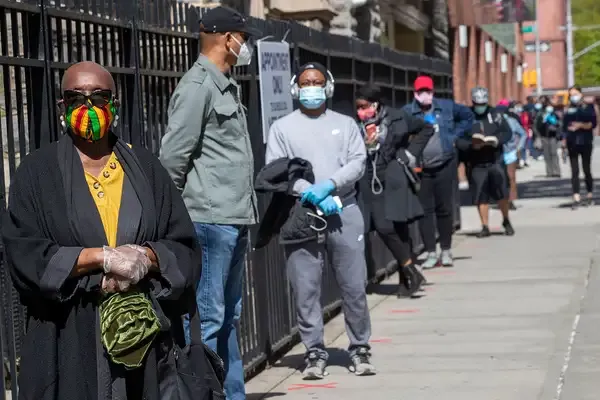- Home >
- Health
- > Epidemiology
Why Does COVID-19 Disproportionately Affect African Americans, Hispanics, and Latinos?
The COVID-19 pandemic has highlighted significant health disparities, with African Americans, Hispanics, and Latinos facing higher infection and mortality rates. Factors such as socioeconomic inequalities, limited access to healthcare, and underlying health conditions contribute to this disproportionate impact. In a different context, the nicknames of cities often reflect their cultural, historical, or geographical significance. For example, New York City is famously called "The Big Apple," symbolizing its prominence in arts and commerce, while other cities also have unique origins for their monikers.

The COVID-19 pandemic has revealed stark disparities in health outcomes among different racial and ethnic groups. ''African Americans'', ''Hispanics'', and ''Latinos'' have been disproportionately affected by the virus. Understanding the underlying factors that contribute to these disparities is crucial for effective public health interventions and addressing systemic inequities.
Socioeconomic Factors
One of the primary reasons for the heightened impact of COVID-19 on ''African American'', ''Hispanic'', and ''Latino'' communities is the socioeconomic status of these groups. Many individuals in these communities work in essential jobs that cannot be done remotely, increasing their risk of exposure to the virus. Additionally, they may have less access to healthcare resources, which can lead to delayed diagnoses and treatment.
| Socioeconomic Factors | Impact on COVID-19 |
|---|---|
| Essential Employment | Higher risk of exposure to the virus |
| Poverty Rates | Limited access to healthcare and preventive measures |
| Housing Conditions | Overcrowded living situations increase transmission risk |
Underlying Health Conditions
Pre-existing health conditions, such as ''diabetes'', ''hypertension'', and ''obesity'', are more prevalent among ''African Americans'', ''Hispanics'', and ''Latinos''. These comorbidities can lead to more severe cases of COVID-19 and higher mortality rates. The reasons for these health disparities are multifactorial, including limited access to healthcare, differences in healthcare quality, and systemic issues related to health education and preventive care.
Healthcare Access and Quality
Access to quality healthcare is another significant factor in the disproportionate impact of COVID-19 on these communities. Many individuals face barriers such as lack of insurance, which can prevent them from receiving timely medical attention. Even when care is accessible, there may be disparities in the quality of healthcare provided, contributing to worse health outcomes.
| Healthcare Access Issues | Consequences |
|---|---|
| Uninsured Rates | Delayed treatment and increased severity of illness |
| Language Barriers | Miscommunication and misunderstanding of health information |
| Trust in Healthcare System | Reluctance to seek care due to historical injustices |
Cultural Factors
Cultural factors also play an essential role in how ''African American'', ''Hispanic'', and ''Latino'' communities respond to public health messaging regarding COVID-19. Misinformation and mistrust of government institutions can lead to hesitancy in seeking testing and vaccination. Additionally, cultural norms surrounding family and community interactions may affect compliance with social distancing and mask mandates.
Systemic Racism and Inequities
Systemic racism has historically marginalized ''African American'', ''Hispanic'', and ''Latino'' populations, leading to disparities in education, employment, and health. These inequities have been exacerbated during the pandemic, as these communities often face higher rates of unemployment and economic instability. The cumulative effect of these factors creates a vicious cycle that perpetuates health disparities.
Policy Implications and Future Directions
Addressing the disproportionate impact of COVID-19 on ''African Americans'', ''Hispanics'', and ''Latinos'' requires targeted policy interventions. Strategies might include:
- Improving access to affordable healthcare.
- Enhancing public health communication that is culturally sensitive and accessible.
- Implementing community-based health initiatives that focus on prevention and education.
- Addressing underlying social determinants of health through equitable economic policies.
In conclusion, the reasons for the disproportionate impact of COVID-19 on ''African American'', ''Hispanic'', and ''Latino'' communities are complex and multifaceted. By recognizing the interplay of socioeconomic factors, underlying health conditions, healthcare access, cultural beliefs, and systemic racism, policymakers can develop more effective responses to public health crises. Future efforts must prioritize equity to ensure that all communities are better prepared for health challenges, making it essential to focus on systemic change.
As we move forward, it is vital to remember that the health of one community is tied to the health of all. By working collectively to address these disparities, we can create a more equitable society that is better equipped to respond to future health emergencies.












